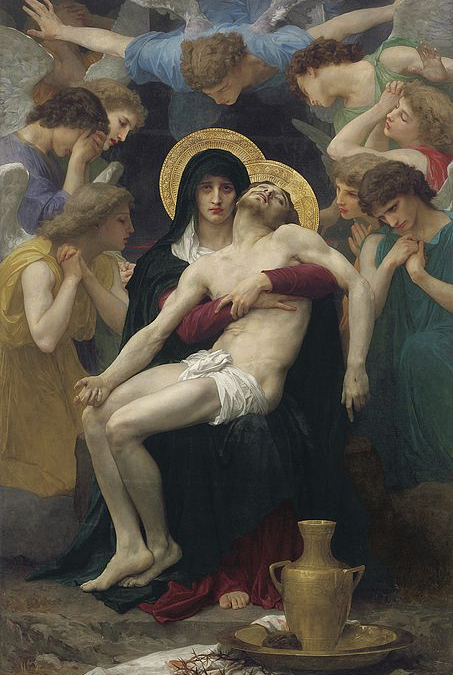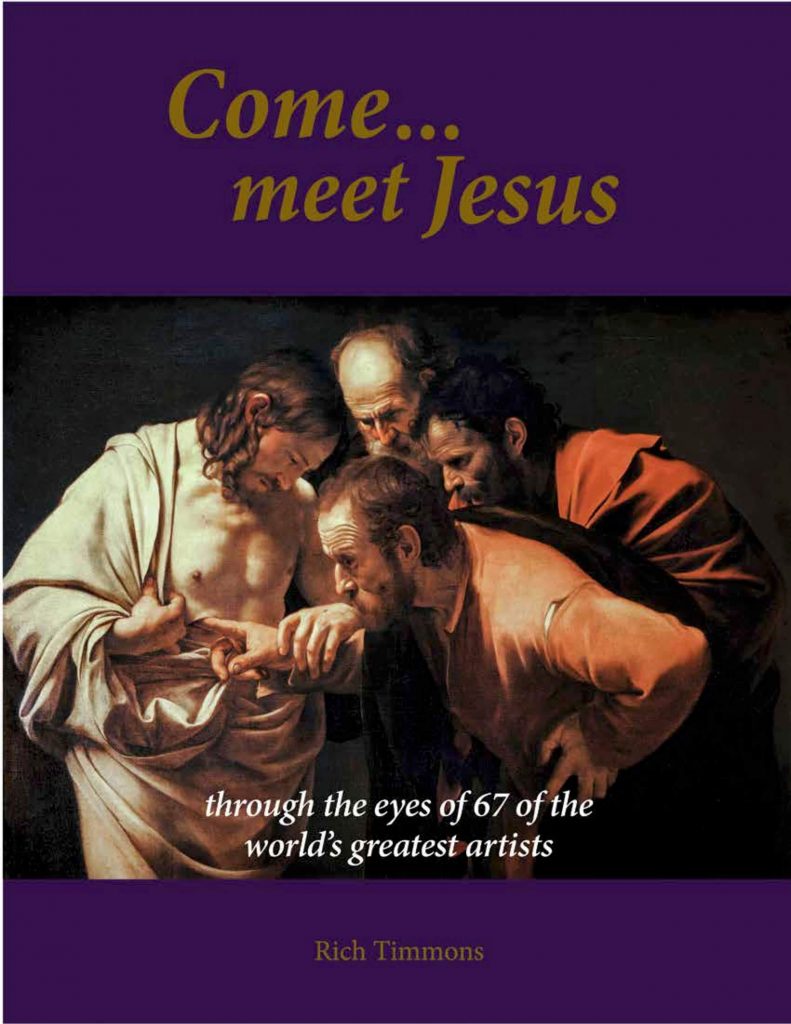He was oppressed, yet when he was afflicted he didn’t open his mouth. As a lamb that is led to the slaughter, and as a sheep that before its shearers is silent, so he didn’t open his mouth. He was taken away by oppression and judgment. As for his generation, who considered that he was cut off out of the land of the living and stricken for the disobedience of my people? They made his grave with the wicked, and with a rich man in his death, although he had done no violence, nor was any deceit in his mouth.
Isaiah 53:7-9
The “pieta,” a depiction of Mary supporting the dead body of Christ, from the Latin meaning pity/compassion/piety, has been depicted in art history countless times, especially in Medieval and Renaissance art. In most pietas, Mary is submissively, sorrowfully, offering her son like a sacrifice. Not so here. Here, Mary clutches her dead son to her body and asks with her silent intense stare, red-rimmed eyes and trembling lips: why?! There is a lot of color and movement in the mourning angels about her but you can barely unlock your gaze from Mary’s face. The contrast of the halo and her dark cloak grabs your attention, but it is the emotion on her face that keeps you there. There is so much pain, sadness, anger, and confusion. She looks just past the viewer… at who? The Romans? The religious leaders? Sinners? God? This is the face of a mother who has just lost her child.
In this work, Bouguereau paints from experience. His oldest son died at age 16 shortly before he began work on this painting, and he undoubtedly channeled his emotions through this part of the Gospel story. The clean, formal Academic style for which he is known balances the raw emotion and makes this painting of the ugliness and wrongness of the death of Christ, and of death itself, still a thing of beauty. Bouguereau has actually been criticized for his Academism; he enjoyed fame in his lifetime at the start of his career but was eventually overshadowed by modern art as the Impressionists fought against everything he stood for artistically and as their way of painting caught on, he became outdated. His paintings are often accused of being technically good, but old-fashioned, unoriginal, and lacking in true content. In this painting, though the content pierces right into the viewer’s soul… and we feel the pain in Mary’s heart and the wrongness of the perfect, innocent Christ being tortured, humiliated, and killed. But He did it for our salvation. The rainbow of angel robes echoes the rainbow after Noah’s flood; God poured out his wrath on Christ and promised, “it is finished.” Jesus’ death was the beginning of new life.
Painting found in The Dallas Museum of Art
Want to see more? Like, follow & share… https://www.facebook.com/comemeetjesus.art
Shop coffee table books at https://www.comemeetjesus.art


